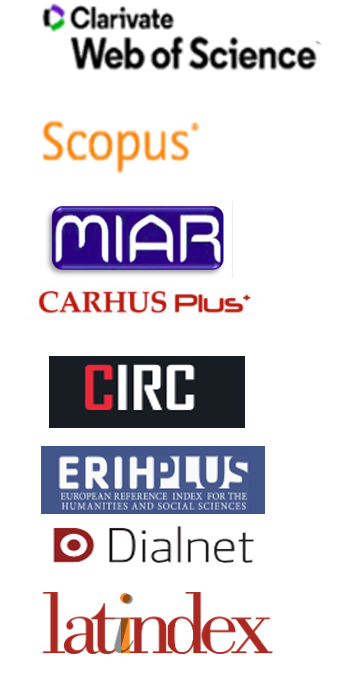The use of a virtual image as a step to the aesthetic presentation of an overpainted baroque painting
Abstract
Technology has become an important part of the conservator’s work, and we are still learning how to fully embrace it for a better practice. The main problem is lack of time for the treatment of cultural heritage and not enough knowledge in the field of technology. In this article we introduce the use of a virtual image to assist with the restoration of the painting Mater Dolorosa by a famous Slovene baroque painter Marko Layer. The painting’s complex conservation state indicated a need for a different approach when implementing procedures. Graphical documentation of the areas that needed to be removed and reintegrated was made for a transparent view of the upcoming work. To help with the removal and the reintegration process, a virtual image of the reintegrated painting and its options was made. The purpose was to get to know the painting’s specifications better. During the making of the virtual image, the painting was researched in detail in order to correctly apply the theory to practice.
Downloads
References
AMBROŽIČ, N. (2013). Odstranjevanje laka in preslikav na sliki Marka Layerja Mater Dolorosa. Diplomsko delo. Ljubljana: University of Ljubljana.
BARNI, M.; BARTOLINI F.; CAPPELLINI, V. (2000). “Image processing for virtual restoration of artworks”, IEEE Multimedia, 7: 34-37, https://doi.org/10.1109/93.848424.
BATIHA, K., AL-SALAIMEH, S., BESOUL, K. (2007). “Digital Art and Design”, International Journal Information Technologies and Knowledge, 1: 147-151, http://hdl.handle.net/10525/245.
BUZZANCA, G. (2000). “A User-friendly Approach (... More About Standards and Customized Menus in Digital Recording of Condition)”. In GraDoc, Graphic Documentation Systems in Mural Painting Conservation, Schmid, W. (ed.), Rome: ICCROM, 147-159.
KAVKLER, K., JUVAN, P., PRESTOR, M. (2012). Marko Layer, Mater Dolorosa, Narodna galerija: poročilo naravoslovnih preiskav. Ljubljana: Zavod za varstvo kulturne dediščine, Restavratorski center.
LIMONCELLI, M., SCHEPIS, L., GERMINARIO C. (2017). Virtual Restoration. Paintings and mosaics. Rome: «L’ERMA» di BRETSCHNEIDER.
MACBETH, R. (2012). “The technical examination and documentation of easel paintings”. In Conservation of Easel Paintings, Rushfield, R., (ed.). London: Routledge, 291-305.
MOORE, M. (2001).“Conservation Documentation and the Implications of Digitisation”. Journal of Conservation and Museum Studies, 7: 6-10, http://doi.org/10.5334/jcms.7012.
SAUNDERS, D., CUPITT, J., PADFIELD J. (2006). “Digital Imaging for Easel Paintings”. In Digital Heritage: Applying Digital Imaging to Cultural Heritage, Macdonald, L., (ed.), Amsterdam etc.: Butterworth-Heinemann / Elsevier, 521-547.
STERLE, A. (2019). Estetska prezentacija preslikane baročne slike Mater Dolorosa Marka Layerja. Diplomsko delo. Ljubljana: University of Ljubljana.
STOLS-WITLOX, M., ORMSBY, B., GOTTSEGENIN, M. (2012). “Grounds 1400–1900 and Twentieth-century grounds”. In Conservation of Easel Paintings, Rushfield, R. (ed.). London: Routledge, 161-188.
RENÉ DE LA RIE, E., QUILLEN LOMAX, S., PALMER, M., DEMING G., MAINES, C. A. (2000). “An investigation of the photochemical stability of urea-aldehyde resin retouching paints: removability tests and colour spectroscopy”, Studies in Conservation, 45: 51-59, https://doi.org/10.1179/sic.2000.45.Supplement-1.51.
- Copyright and intellectual property belongs to author. Author guarantees editing and publishing rights to Ge-Conservación Journal, under a Creative Commons Attribution License. This license allows others to share the work with authorship and the original source of publication acknowledgement.
- Articles can be used for scientific and educational purposes but never for commercial use, being sanctioned by law.
- The whole content of the article is author’s responsibility.
- Ge-Conservación Journal and authors may establish additional agreements for non-exclusive distribution of the work version published at the Journal (for example, on institutional repositories or on a book) with acknowledgment of the original publication on this Journal.
- Author is allowed and encouraged to disseminate his works electronically (for example, on institutional repositories or on its own website) after being published on Ge-Conservación Journal. This will contribute for fruitful interchanges as also for wider and earlier citations of the author’s works.
- Author’s personal data will only be used for the Journal purposes and will not be given to others.









